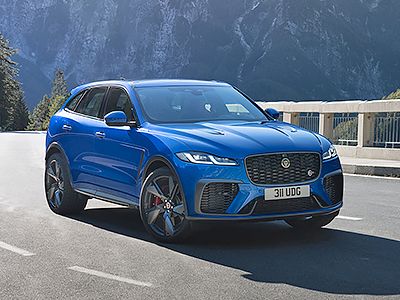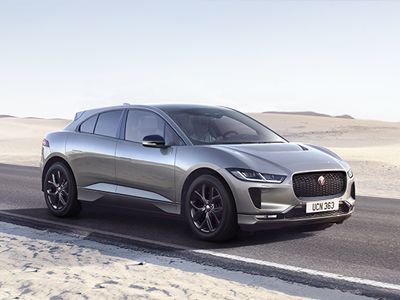Jaguar is a car company with which many people will have a close link due to its classic models. Cars like the XK8, E-Type and XJ220 are all cars that spring to mind when you think of this brand, so it was a little against the grain when it announced that it would be pivoting to create SUVs as well as its traditional saloon and estate cars.
But, in truth, it was an inspired move, with Jaguar’s SUV range now taking a big chunk of the company’s sales each year. Here, we’re going to take a look at which high-riding models the firm currently offers and what you need to know about them.

F-Pace
The F-Pace is where things kicked off. Encompassing many styling elements from Jaguar’s saloon and estate cars, the F-Pace has become a core part of the firm’s line-up of cars. These days the F-Pace has been updated to include some of Jaguar’s latest in-car technology, which has greatly improved the overall look and feel of the cabin.
It’s remarkably good off-road, too, with plenty of high-end systems there to keep the wheels turning regardless of the conditions. There are three diesel and three petrol engine options to choose from, with the majority employing mild-hybrid technology for improved efficiency. There’s also a plug-in hybrid that links a 2.0-litre turbocharged petrol engine with an electric motor and batteries, too.
At the top of the range sits the full-fat SVR, which employs a monstrous 5.0-litre supercharged V8 engine bringing 542bhp and a 0-60mph time of just 3.8 seconds. It’s one of the most powerful cars in its class, in fact.
E-Pace
The E-Pace was the next SUV to arrive in Jaguar’s line-up after the F-Pace. Incorporating many of the styling and design touches that made the F-Pace a success but applied to a smaller canvas, the E-Pace has proved to be a popular choice for those who like the look and feel of a larger SUV but don’t want an overly large body style.
Much like he F-Pace, the E-Pace has also received a crucial update with the biggest changes coming in the form of Jaguar’s latest Pivi Pro infotainment system. Clear and easy to use, it replaces the outdated and clunky system found in the older car. This update refined the car’s looks, too, but Jaguar was no doubt aware that the E-Pace’s design was one of its strongest aspects, so kept changes to a minimum.
Engine-wise, the E-Pace has plenty of variety. There’s a 2.0-litre turbocharged petrol which is available in a variety of power outputs, and it’s the same case for the 2.0-litre turbocharged diesel too. Jaguar has also included a new plug-in hybrid to the E-Pace range, combining a 1.5-litre turbocharged petrol engine with an electric motor and battery for improved consumption and emission figures.


I-Pace
Arriving as Jaguar’s first ground-up electric car meant that the I-Pace had some serious expectations thrown its direction. Thankfully, with its striking design and high-end interior, it has more than lived up to this and now sets the tone for future Jaguar electric vehicles. Plus, it has managed to become one of the best-driving EVs around, despite being the first of a new wave of EVs to hit the market.
Inside the I-Pace’s cabin still feels fresh and innovative thanks to plenty of high-end materials and easy-to-use screens. Much like the others on this list, it employs Jaguar’s Pivi Pro system, which is easily one of the best on the market and also incorporates smartphone systems such as Apple CarPlay and Android Auto.
The I-Pace employs a twin electric motor setup, too, which kicks out 394bhp and 696Nm of torque. Despite being rather powerful, the I-Pace can return up to 292 miles between charges, while the ability to charge at speeds of up to 100kW means that up to 78 miles of range can be added in an hour.